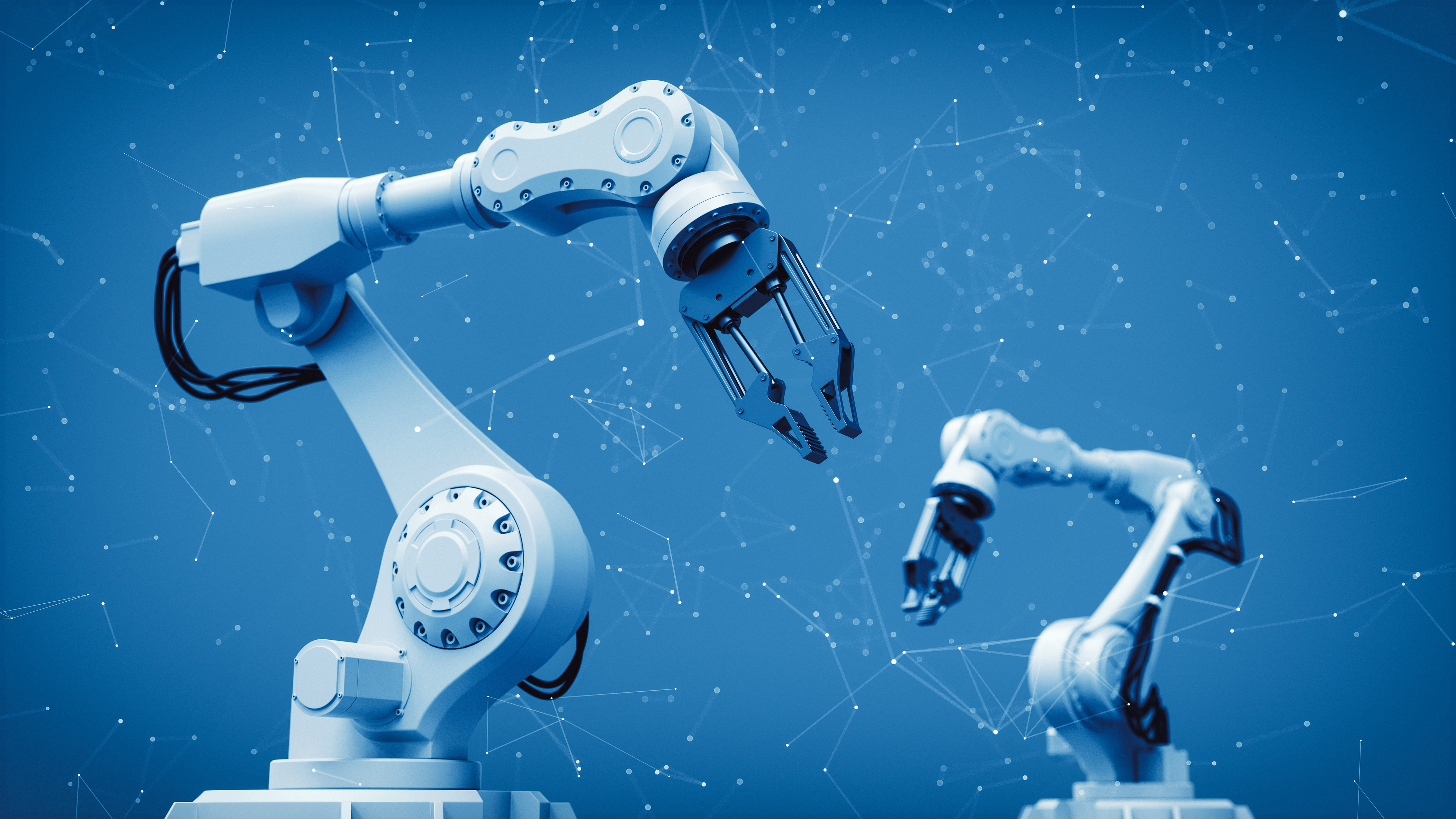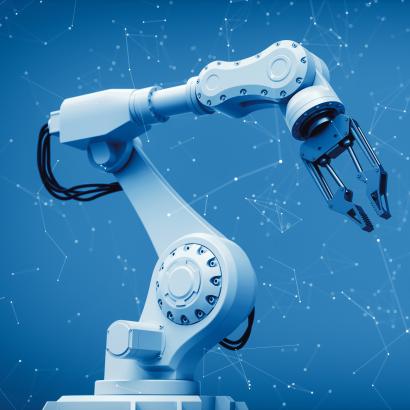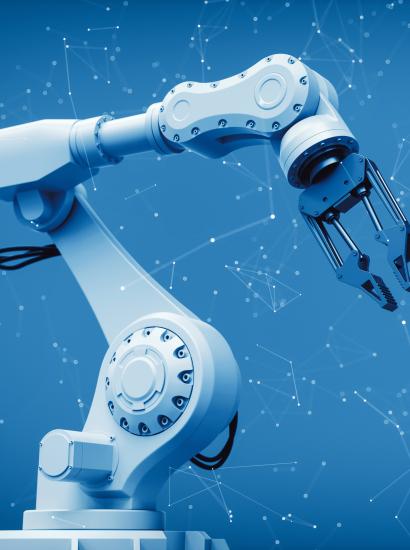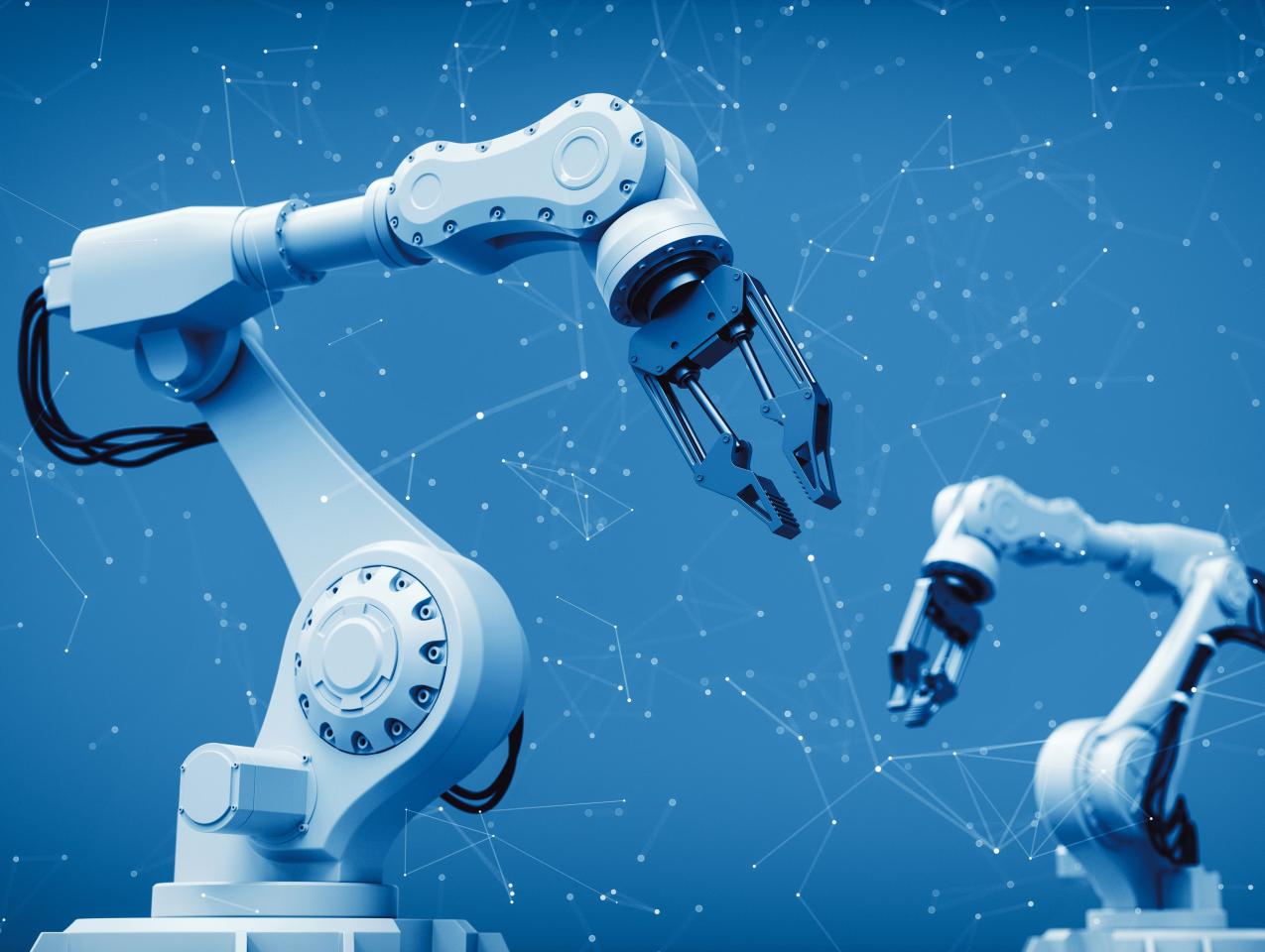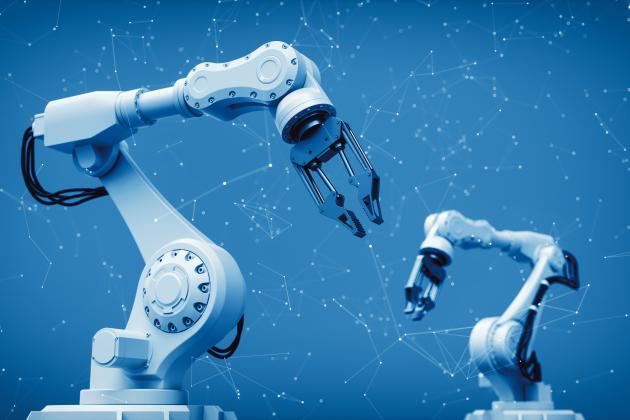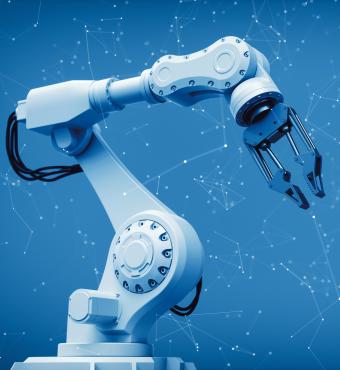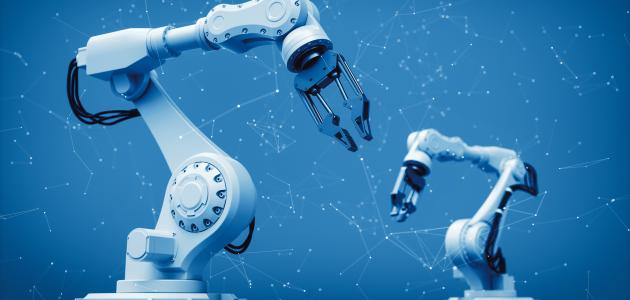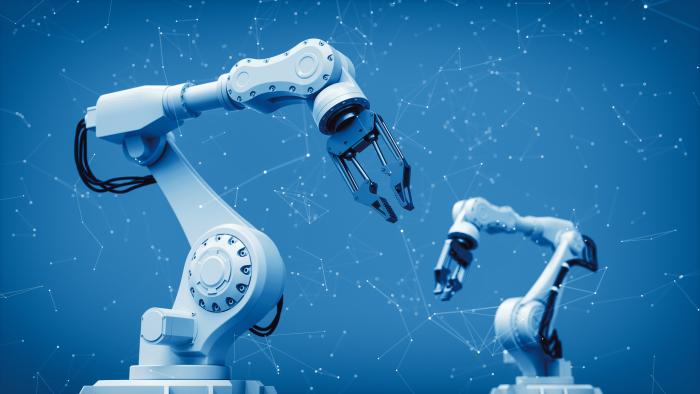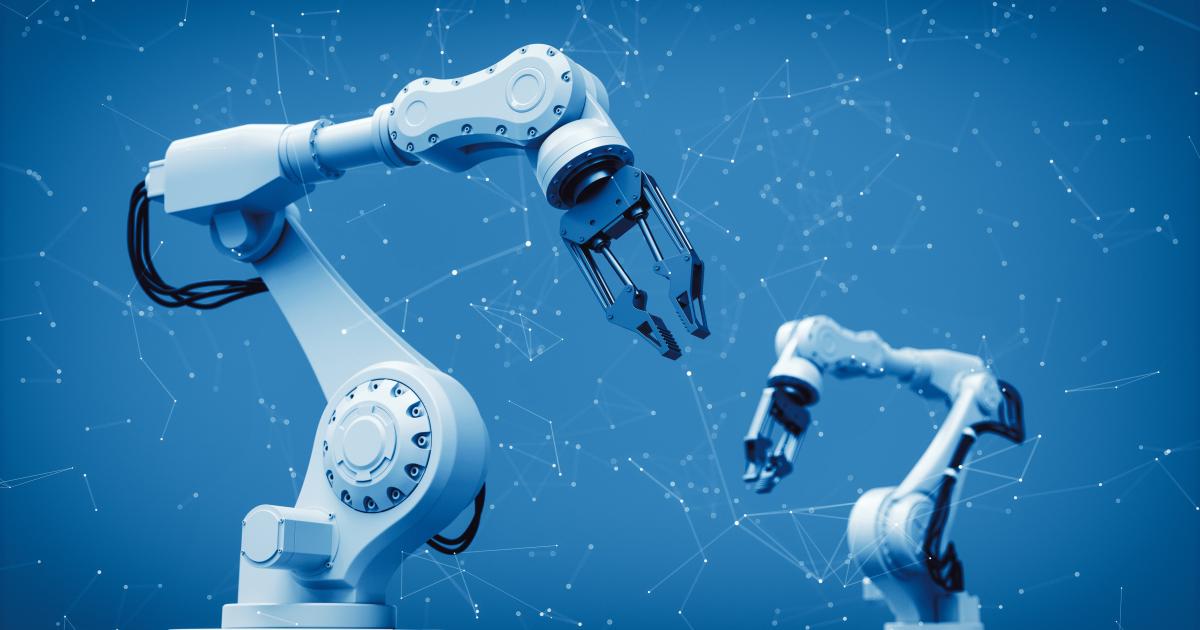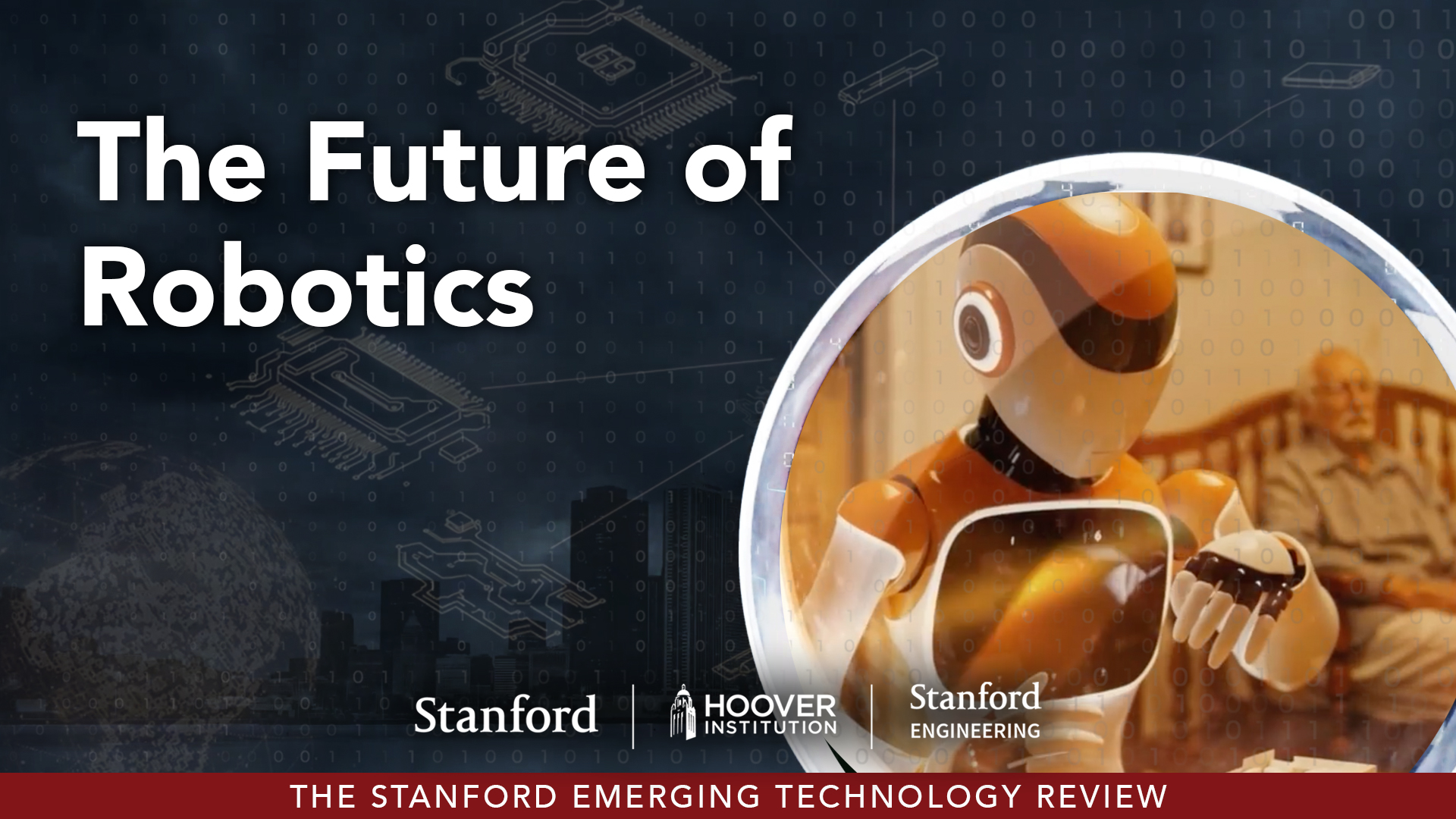- Innovation
- Understanding the Effects of Technology on Economics and Governance
This excerpt from the latest issue of the Stanford Emerging Technology Review (SETR) focuses on robotics, one of ten key technologies studied in this continuing educational initiative. SETR, a project of the Hoover Institution and the Stanford School of Engineering, harnesses the expertise of Stanford University’s leading science and engineering faculty to create an easy-to-use reference tool for policy makers. Download the full report here and subscribe here for news and updates.
Researchers do not universally agree on the definition of a robot, but a consensus seems to have emerged that at the very least, a robot is a human-made physical entity with ways of sensing itself or the world around it and ways of creating physical effects on that world.
Robots, which include both static entities such as fixed robotic arms on production lines and mobile entities such as drones, must integrate many different component technologies to combine perception of the environment with action in it. Perception requires generating a representation of the robot’s environment and its interaction with its surroundings. Action requires the robot to make physical changes to itself or the environment based on those perceptions.
The key engineering challenges in robotics involve the design of components and integration of them within a robot’s body so it can perform intended tasks in different settings in a given environment. Different types of robots operate in different environments—including factories, homes, and even space—and each environment poses distinct complexities beyond just a robot’s technical performance.
Some robots use computer vision and other types of artificial intelligence (AI) for understanding their environments and decision-making, but robotics and AI do not always go together. Robots with varying degrees of autonomy have been used in everything from delicate surgical procedures to space exploration.
Where the robots are
Future robots may be useful for improving the US manufacturing base, reducing supply chain vulnerabilities, delivering elder care, enhancing food production, tackling the housing shortage, improving energy sustainability, and performing almost any task involving physical presence. Here are some of the most important current influences on the robotics field.
Manufacturing: The manufacturing sector is a major contributor to the US economy. In 2023, it accounted for just over a tenth of GDP, adding $2.87 trillion. It is also a major contributor to employment, with an estimated thirteen million people working in manufacturing.
However, the sector is facing several challenges that robotics can help overcome. One of the most important of these is a shortage of skilled labor. Approximately two-thirds of the respondents in the National Association of Manufacturers’ outlook survey, conducted in the first quarter of 2024, highlighted attracting and retaining skilled workers as their primary challenge. Several reasons have led to this situation, including more people retiring and a declining population growth rate. Unless solutions are found, millions of manufacturing jobs could remain unfilled, impacting America’s prosperity and national security.
Another major challenge is the vulnerability of the US supply chain, a result of the trend toward outsourcing manufacturing to countries with lower labor costs. The globalization of manufacturing has helped reduce the price and increase the variety of goods available to US consumers, but it has left US supply chains more vulnerable to disruptions—as we saw during the COVID-19 pandemic with the sudden shortage of motor vehicles and consumer electronics, to name just two industries.
Robots have the potential to reduce vulnerabilities in these supply chains in many ways. Innovations such as robotic graspers that can handle even very fragile goods can make current manufacturing lines more adaptable and reconfigurable. The development and increased deployment of collaborative robots, or cobots, that can interact with human workers could help alleviate labor shortages—though human workers’ reactions to these robots and safety issues associated with them are significant concerns that need to be addressed.
The “now” economy: Near-real-time delivery of goods and services, also known as the “now” economy, refers to the deployment of goods and services as close to customers as possible so that products are available very rapidly upon demand.
Robotics is already providing solutions to address these needs. Various kinds of robots, including drones and multiwheeled delivery vehicles that can navigate sidewalks, are being trialed to conduct last-mile deliveries (the final step in the shipping process when goods are transported from the distribution hub to the customer). Robots can automate basic services around the home, such as floor cleaning. They can also serve as seasonal, on-demand labor in some industries such as agriculture, where autonomous robots can be used to pick fruit and perform other tasks in the harvesting season.
While the potential for further innovation is clear, there are also many challenges, both technical and nontechnical. These include ensuring that the use of robots in last-mile delivery strategies does not lead to safety and privacy violations; developing adaptable and reliable manipulation capabilities that enable autonomous robots to handle a wide variety of goods and other objects for delivery to customers; and creating more networking infrastructure.
Food production: The world’s population increased from seven billion to eight billion between 2010 and 2022, and the United Nations estimates it will rise by a further two billion people by 2030. To keep up with demand, food production is predicted to increase by 50 percent by 2050. Farmers will need to more rapidly adapt the types of crops they use—and their seeding and harvesting practices—to keep up.
Robotics can support these efforts and help streamline the production and processing of food. Currently, robots are deployed mainly to reduce the cost of specific processes such as milking, seeding fields, and picking fruit. They also help to optimize water usage, reduce chemical inputs, and minimize runoff. The main hurdle to expanding the use of robotics in agriculture and food production is the dexterity needed to accomplish certain complex tasks. Meat production, for example, is a heavily subsidized market with very little automation. Although some companies such as Cargill and Tyson Foods have recently invested heavily in developing automated solutions, much can still be done to improve the quality and efficiency of the meat-carving process.
Health care: Assistive and rehabilitative robots are being developed and deployed to support human caregivers. These robots can be electronic companions that help people with basic tasks associated with the activities of daily living both inside and outside their homes. Assistive robots can also take the form of exoskeletons. These are wearable
robotic devices that provide support with movement by, for instance, working with calf muscles to give people extra propulsion with each step taken. Smaller devices like trackers can help monitor symptoms, recognize falls and alert health professionals, and detect early signs of cardiac issues.
Another application of robotics in health care is in surgery. Around 30 percent of the surgeries necessary worldwide every year go unperformed. Using robots to automate
all or parts of routine procedures can streamline surgical interventions, making them safer and more efficient. Developments in force sensor feedback and haptics—the science of simulating pressure, vibrations, and other sensations related to touch—are driving the development of surgical robots that can be controlled from remote locations, making it unnecessary for a doctor to be physically present to either diagnose or treat a patient. Telerobotics is particularly promising for rural areas, where it can be harder to get physical access to specialists. Robotic surgery focused on low- and middle-income countries may help improve access to surgical care in those countries.
Construction and infrastructure: One study notes that even before the pandemic, construction firms ranked labor shortages as the biggest hurdle for their businesses, and 78 percent of them were experiencing difficulty in filling their job positions. Robots could potentially address this shortage, increase overall construction productivity, and also reduce worker injuries and deaths.
There are commercial robots capable of bricklaying, house framing, wall finishing, and moving heavy items on construction sites. In addition to construction, robotics could contribute to other aspects of building and maintaining infrastructure. Paving, grading, striping and marking, and repairing roads could be either fully or partially automated.
In the renewable-energy sector, robots are indispensable in the construction, maintenance, and management of solar and wind farms. They are also helping to gather resources in a more sustainable way. Robots can harvest materials, such as lumber, with minimal ecological impact and collect metallic nodules from the ocean floor without damaging marine ecosystems. In recycling and waste management, advanced robotic systems can handle hazardous materials and complex products, protecting workers and streamlining processing.
Managing profound change
The examples cited above highlight the potential for robots to play an important role in advancing sustainability goals, but significant investment in technology development and infrastructure is still needed. For instance, ensuring the reliability and efficiency of robotic systems in diverse and often harsh and unpredictable environments is crucial. Creating safe and efficient human–machine interactions in work such as waste management and infrastructure maintenance will also be vital.
Furthermore, the adoption of robotics in these and other areas has implications for workforce dynamics. As robots become more capable of taking on dull, dirty, and dangerous tasks, enabling human workers to focus on more complex and rewarding
activities, there is a clear need to manage the transition carefully to prevent significant job displacement. Investing in education and training programs is essential to prepare the workforce for new roles and ensure that the benefits of robotics are widely shared.
Achieving the full potential of robots to help drive economic growth and address pressing supply chain and labor constraints will require a major push from the federal government and the private sector to improve robotics adoption and research across the nation. Funding of robotics research and development remains an issue. In addition to efforts such as the National Robotics Initiative, which was launched during the Obama administration, more support will be needed if the United States is to make the most of the exciting and transformative opportunities that robotics offers.







